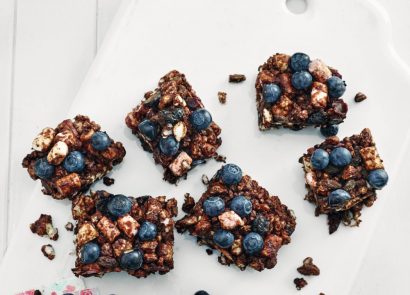Harley Street nutritionist Rhiannon Lambert gives us her top five bacteria-friendly foods to add to your shopping trolley today
You could be eating the healthiest diet in the world, but if it’s not being absorbed effectively then it’s all to no avail. Our digestion is far from a simple process; it involves a series of hormonal signals working throughout the gut and our nervous system. The bacteria inside our gut are full of useful nutrition but we are unable to re-absorb them, so it’s important to keep topping up our bacteria with food. This is why prebiotics and probiotics are so important for a happy tummy and our overall health. However, they play different roles: probiotics are live bacteria found in certain foods or supplements, while prebiotics are substances that come from types of foods (mostly fibre) that humans can’t digest. Eating balanced amounts of both probiotics and prebiotics can help ensure that you have the right balance of these bacteria, which should improve your health.
Yoghurt
Yoghurt is made from milk fermented by friendly bacteria, mainly lactic acid bacteria and bifidobacteria. Yoghurt may be better than milk for people with lactose intolerance because the bacteria turns some of the lactose into lactic acid. However, not all yoghurt contains live probiotics. Choose pots with active or live cultures – but be wary of the ones loaded with sugars.
Sauerkraut
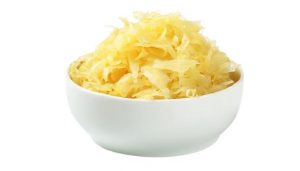
This is finely shredded cabbage that has been fermented by lactic acid bacteria. Added to its probiotic qualities, sauerkraut is rich in fibre, as well as vitamins B, C and K. It’s also high in sodium and contains iron, manganese and the antioxidants important for eye health. Always choose unpasteurised sauerkraut, as pasteurisation kills the live and active bacteria.
High – fibre food
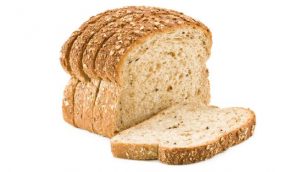
Fibre helps to keep our digestive system healthy and helps to prevent constipation. For example, fibre bulks up stools, makes them softer and easier to pass and makes waste move through the digestive tract more quickly. One handy source is wholemeal and high-fibre bread. It is a delicious way to include more fibre in your diet; don’t forget you can also create sweet and savoury recipes with bread, so it is super-versatile. I like Burgen Soya & Linseed bread, which provides over 4g of fibre per slice. Research has increasingly shown how important the bacteria in our gut may be to our health, and it has been suggested that a fibre-rich diet can help increase the good bacteria in the gut. Some fibre types provide a food source for ‘friendly’ gut bacteria, helping them to increase and produce substances which are thought to be protective such as shortchain fatty acids. So, how much fibre do we need? The government recommend 30g a day for adults (aged 17 years and over). On average, we consume much less than this – about 18g per day.
Kefir
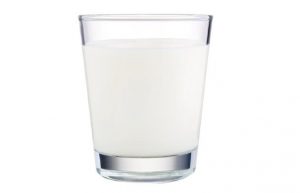
Kefir is a fermented probiotic milk drink. It is made by adding kefir grains to cow’s or goat’s milk. Kefir grains are not cereal grains, but rather cultures of lactic acid bacteria and yeast. Kefir contains several major strains of friendly bacteria and yeast, making it a diverse and potent probiotic.
Kimchi
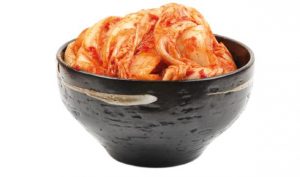
Kimchi is a fermented, spicy Korean side dish. Cabbage is usually the main ingredient, but it can also be made from other vegetables. Kimchi contains the lactic acid bacteria lactobacillus kimchi, as well as other lactic acid bacteria.
Handy gut helpers
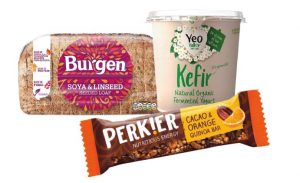
Burgen Soya & Linseed Bread, £1.50, burgenbread.com 2 Perkier Cacao & Orange Quinoa Bar, £2 for three bars, perkier.co.uk 3 Yeo Valley Kefir, £1.50, Tesco
Burgen Soya & Linseed bread has teamed up with registered Harley Street nutritionist Rhiannon Lambert as part of its Discover Burgen campaign, which is calling on Brits to discover new things and go for the good stuff.














